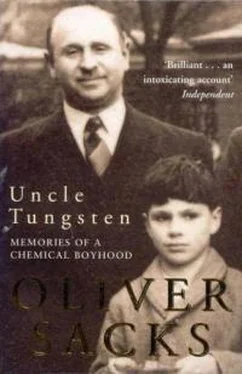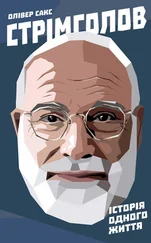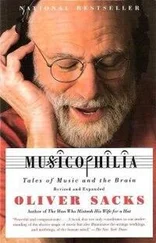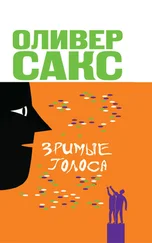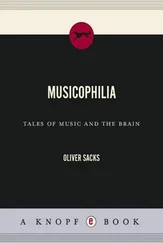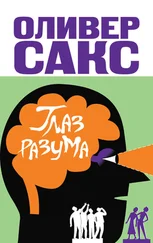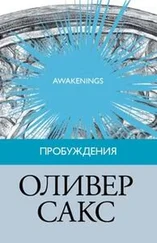Reading Dalton, reading about atoms, put me in a sort of rapture, thinking that the mysterious proportionalities and numbers one saw on a gross scale in the lab might reflect an invisible, infinitesimal, inner world of atoms, dancing, touching, attracting, and combining. I had the sense that I was being enabled to see, using the imagination as a microscope, a tiny world, an ultimate world, billions or trillions of times smaller than our own – the actual constituents of matter.
Uncle Dave had shown me gold leaf, beaten and hammered out until it became almost transparent, so that it transmitted light, a beautiful bluish green light. This leaf, a millionth of an inch thick, he said, was only a few dozen atoms thick. My father had shown me how a very bitter substance such as strychnine could be diluted a millionfold and still be tasted. And I liked to experiment with thin films, to blow soap bubbles in the bath – a speck of soapy water could be blown, with care, into a huge bubble – and to watch oil, in iridescent films, spreading on wet roads. All these prepared me, in a way, to imagine the very small – the smallness of particles that composed the millionth-of-an-inch thickness of gold leaf, a soap bubble, or an oil film.
But what Dalton intimated was infinitely more thrilling: for it was not just atoms in the Newtonian sense, but atoms as richly individual as the elements themselves – atoms whose individuality gave elements theirs.
Dalton later made wooden models of atoms, and I saw his actual models in the Science Museum as a boy. These, crude and diagrammatic as they were, excited my imagination, helped give me a sense that atoms really existed. But not everyone felt this, and, for some chemists, Dalton’s models epitomized the absurdity, as they saw it, of an atomic hypothesis. ‘Atoms’, the eminent chemist H.E. Roscoe was to write, eighty years later, ‘are round bits of wood invented by Mr. Dalton.’
It was indeed possible, in Dalton’s time, to regard the idea of atoms as implausible, if not outright nonsense, and it would be over a century before indisputable evidence for the existence of atoms was secured. Wilhelm Ostwald, for one, was not convinced of the reality of atoms, and in his 1902 Principles of Inorganic Chemistry he wrote:
Chemical processes occur in such a way as if the substances were composed of atoms… At best there follows from this the possibility that they are in reality so: not however, the certainty … One must not be led astray by the agreement between picture and reality, and confound the two… An hypothesis is only an aid to representation .
Now, of course, we can ‘see’ and even manipulate individual atoms, using an atomic force microscope. But it required enormous vision and courage, at the very beginning of the nineteenth century, to postulate entities so utterly beyond the bounds of any empirical demonstration possible at the time. [33]
Dalton’s theory of chemical atoms was detailed in his notebook on the 6th of September, 1803, his thirty-seventh birthday. He was at first too modest or too diffident to publish anything on his theory (he had, however, worked out the atomic weights of half a dozen elements – hydrogen, nitrogen, carbon, oxygen, phosphorus, sulphur – which he recorded in his notebook). But word was soon out that he had hatched something astonishing, and Thomas Thomson, the eminent chemist, went up to Manchester to meet him. A single short conversation with Dalton in 1804 ‘converted’ Thomson, altered his life. ‘I was enchanted’, he later wrote, ‘with the new light which immediately burst upon my mind, and I saw at a glance the immense importance of such a theory.’
Although Dalton had presented some of his thoughts to the Literary and Philosophical Society in Manchester, they did not become known to a wider public until Thomson wrote of them. Thomson’s presentation was brilliant and persuasive, much more so than Dalton’s own exposition, which was crammed, awkwardly, into the final pages of his 1808 New System .
But Dalton himself realized that there were fundamental problems with his theory. For to pass from a combining or equivalent weight to an atomic weight required that one know the exact formula of a compound, for the same elements, in some cases, might combine in more than one way (as in the three oxides of nitrogen). So Dalton assumed that if two elements formed only a single compound (as hydrogen and oxygen appeared to do in water, or nitrogen and hydrogen in ammonia), they would do so in the simplest possible ratio: one to one. This ratio, he felt, would surely be the most stable. Thus he took the formula of water (in modern nomenclature) to be HO, and the atomic weight of oxygen to be the same as its equivalent weight, namely 8. Similarly, he took the formula of ammonia to be NH, and thus the atomic weight of nitrogen to be 5.
And yet, as was demonstrated by the French chemist Gay-Lussac, in the very year that Dalton published his New System , if one measured volumes and not weights one found that two volumes, not one, of hydrogen combined with one volume of oxygen, to yield two volumes of steam. Dalton was skeptical of these findings (although he could have confirmed them himself with great ease), skeptical because he felt they would entail the breaking of an atom into two, to allow the combination of a half-atom of oxygen with each atom of hydrogen.
Although Dalton talked about ‘compound’ atoms, he had not clearly distinguished (any more clearly than his predecessors) between molecules – the smallest amount of an element or compound that could exist free – and atoms – the actual units of chemical combination. The Italian chemist Avogadro, reviewing Gay-Lussac’s results, now hypothesized that equal volumes of gases contained equal numbers of molecules . For this to be so, the molecules of hydrogen and oxygen would have to have two atoms apiece. Their combination to form water, therefore, could be represented as 2H 2+1O 2 → 2H 20.
But in an extraordinary way (at least so it seems in retrospect), Avogadro’s suggestion of diatomic molecules was ignored or resisted by virtually everyone, including Dalton. There remained great confusion between atoms and molecules, and a disbelief that atoms of the same sort could link together. There was no problem in seeing water, a compound, as H 20, but a seemingly insuperable difficulty in allowing that a molecule of pure hydrogen could be H 2. Many atomic weights of the early nineteenth century were thus wrong by simple numerical factors – some seemed to be half what they should be, some twice, some a third, some a quarter, and so on.
Griffin’s book, my first guide in the laboratory, was written in the first half of the nineteenth century, and many of his formulas, and hence many of his atomic weights, were as erroneous as Dalton’s. Not that any of this mattered too much in practice – nor, indeed, did it affect the great virtue, the many virtues, of Griffin. His formulas and his atomic weights might indeed have been wrong, but the reagents he suggested, and their quantities, were exactly right. It was only the interpretation, the formal interpretation, that was askew.
With such confusion about elemental molecules, added to uncertainty about the formulas of many compounds, the very notion of atomic weights started to be discredited in the 1830 s, and indeed the very notion of atoms and atomic weights fell into disrepute, so much so that Dumas, the great French chemist, exclaimed in 1837, ‘If I were master I would efface the word atom from science.’
Finally in 1858, Avogadro’s countryman Stanislao Cannizzaro realized that Avogadro’s 1811 hypothesis provided an elegant way out of the decades-long confusion about atoms and molecules, atomic and equivalent weights. Cannizzaro’s first paper was as ignored as Avogadro’s had been, but when, at the close of 1860, chemists gathered at the first-ever international chemical meeting in Karlsruhe, it was Cannizzaro’s presentation that stole the show, and ended the intellectual agony of many years.
Читать дальше
